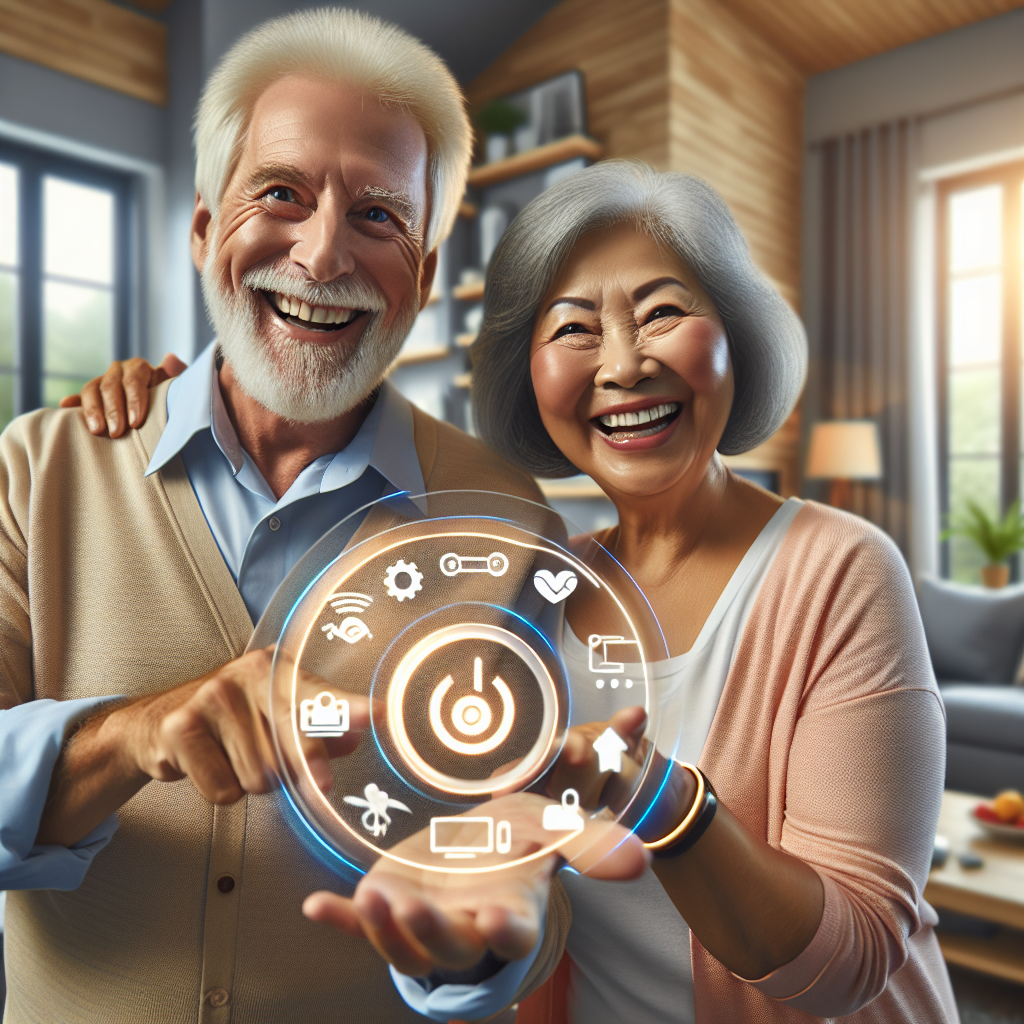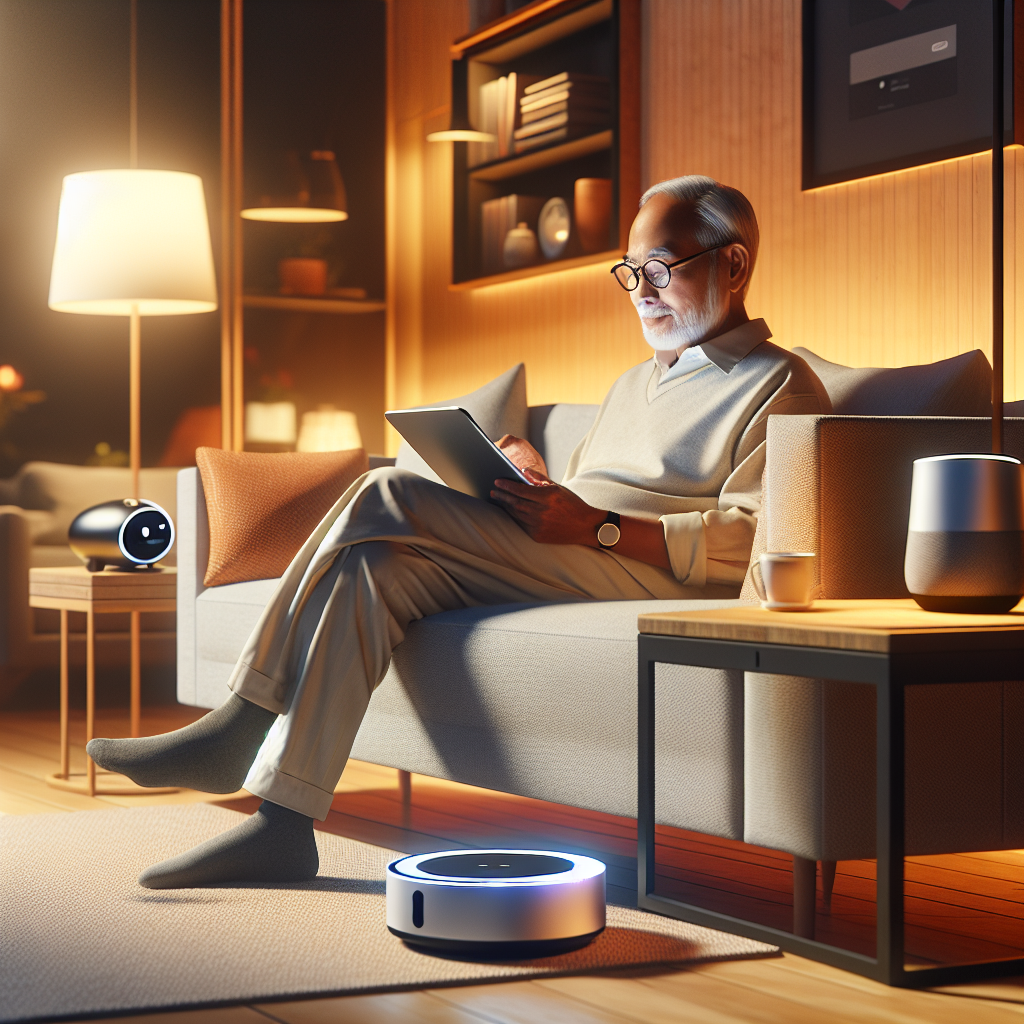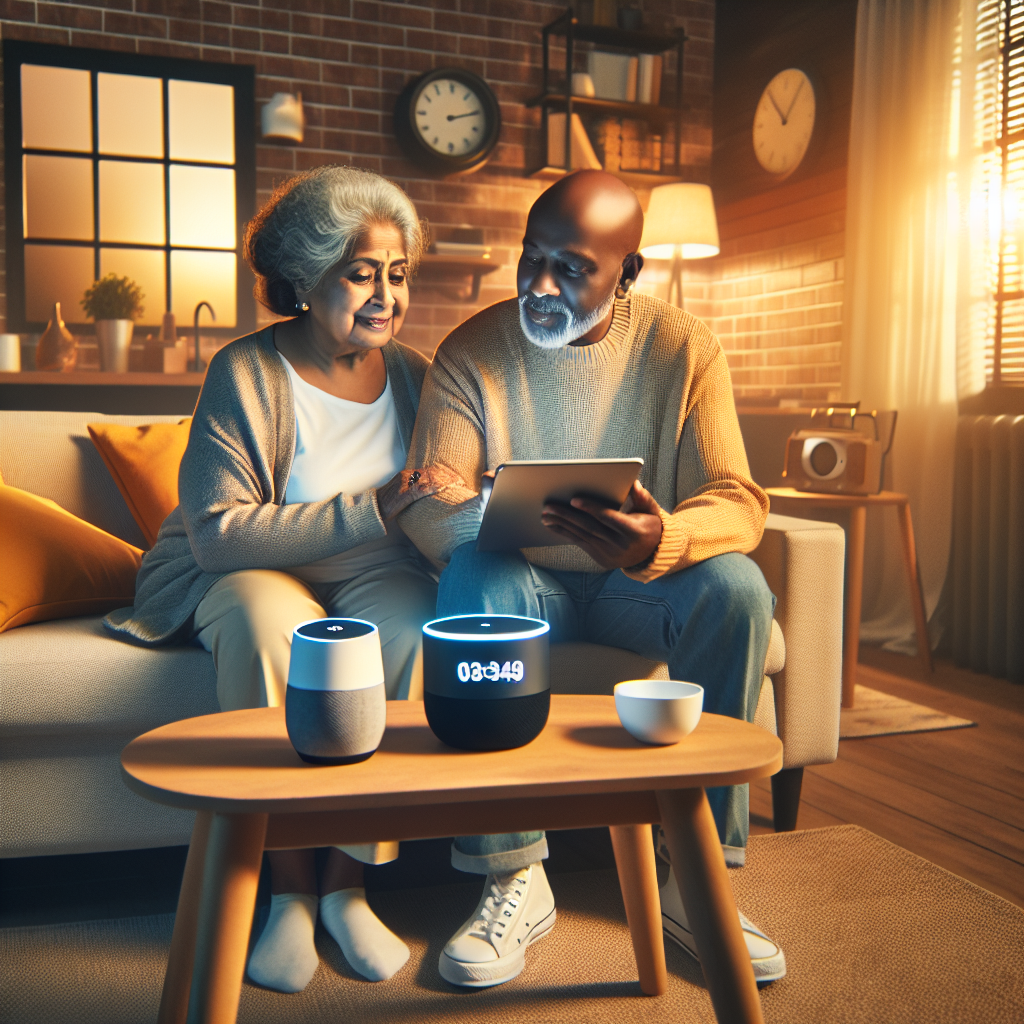Smart Tech Solutions That Make Senior Living Easier and Safer
Introduction
Welcome to the age of technology for older adults, where the future is not just for the young and tech-savvy! Today, we’re diving into a world where assistive technology for seniors is not just a luxury but a necessity, making senior living easier and safer.
Imagine this: your aging parents, once hesitant about technology, now confidently navigating their own senior-friendly devices. From smart home gadgets that keep them safe to health tracking devices that monitor their well-being, technology is reshaping how we care for our loved ones.
But wait! Before you rush out to buy every shiny gadget on the market, let’s take a moment to understand what’s truly out there. We’ll explore everything from mobile phones for seniors to innovative tech solutions that promote independence and enhance communication with family. Because let’s face it, if you can’t Facetime Grandma without her accidentally turning on the blender, what’s the point?
This blog post will guide you through the latest trends in elder care technology, highlight essential tools like wearable tech for seniors, and even throw in some tips on online safety because who wants their loved ones falling prey to internet scams? Not us!
So buckle up as we explore how these digital tools can make life not only easier but also more enjoyable for our beloved older adults!
The Importance of Technology for Older Adults
When it comes to technology for older adults, we’re not just talking about fancy gadgets that make cool sounds. We’re diving into a treasure trove of tools that can genuinely transform lives! Think of technology as a trusty sidekick, helping our aging parents and grandparents maintain their independence while also keeping them safe. Here’s why it’s so crucial:
- Enhancing independence and safety: With smart home devices and assistive technology, older adults can manage daily tasks with ease. Imagine a world where they can turn off lights or lock doors without getting up! It’s like having their own personal butler minus the bow tie.
- Improving communication with family and caregivers: Technology bridges the gap between generations. Seniors can use video calls to chat with family members or send messages through user-friendly smartphones. It’s like having a virtual family reunion every day!
- Promoting health and wellness: Health tracking devices for seniors are all the rage! From monitoring heart rates to reminding them to take medications, these gadgets are game-changers in maintaining physical health. Plus, they can easily share this data with healthcare providers for better care management.
AARP reports that technology enhances social connections, provides healthcare access, and increases independence for older adults. The right tech solutions can truly empower them!
But wait, there’s more! The world of elderly technology products isn’t just about functionality; it’s also about fun! From tablets designed specifically for seniors to virtual reality experiences that transport them to new worlds, tech can add a sprinkle of joy to everyday life.
So next time you think about technology for aging parents or your beloved grandparents, remember: it’s not just about keeping up with the times it’s about enhancing their quality of life in ways we never thought possible!
Assistive Technology for Seniors
When it comes to technology for older adults, assistive technology is like that trusty Swiss Army knife versatile, handy, and essential for daily living. These tools are designed to make life easier, safer, and more enjoyable for seniors.
Overview of Assistive Technology Options
Assistive technology encompasses a wide range of devices tailored to meet the unique needs of older adults. From mobility aids to communication devices, these technologies help bridge the gap between independence and safety.
Benefits of Using Assistive Devices
- Enhanced Independence: Seniors can perform daily tasks with greater ease.
- Improved Safety: Many devices come with built-in alerts or monitoring systems.
- Better Communication: Stay connected with family and friends through user-friendly technology.
- Health Monitoring: Devices like health tracking wearables keep tabs on vital signs and medication schedules.
Examples of Popular Assistive Technologies
- Mobility Aids: Walkers, canes, and powered scooters help seniors get around safely.
- Cognitive Aids: Reminder devices or apps that prompt medication times or appointments.
- Sensory Devices: Hearing aids and vision-enhancing glasses boost sensory capabilities.
- Smart Home Gadgets: Voice-activated assistants can control lighting, temperature, and even security systems.
The latest trends in assistive technology show a shift towards more integrated solutions. For example, many new devices now sync with smartphones or tablets, making them easier to use for those already familiar with mobile tech!
A common misconception is that assistive technology is only for those with severe disabilities. In reality, these tools can benefit anyone looking to enhance their quality of life. Whether it’s a simple reminder app or a sophisticated health tracking device, there’s something out there for everyone!
If you’re considering tech solutions for aging parents or loved ones, don’t hesitate! Exploring these innovative tools can lead to improved quality of life and peace of mind for both seniors and their families. Remember: the right technology can open up a world of possibilities!
Smart Home Devices for Seniors
Welcome to the future, where smart homes are not just for tech-savvy millennials! The latest technology for older adults is designed to enhance safety and convenience in everyday life. Smart home devices are like having a personal assistant who never takes a day off they help seniors live independently while providing peace of mind for family members.
Overview of Smart Home Technology
Smart home technology includes a variety of devices that can be controlled remotely or programmed to operate autonomously. Think of it as a digital butler, ready to assist with tasks ranging from lighting and temperature control to security and health monitoring.
Key Features That Enhance Safety and Convenience
- Voice Activation: Devices like smart speakers allow seniors to control their environment hands-free. Imagine asking your lights to turn on without even lifting a finger!
- Remote Monitoring: Family members can keep an eye on their loved ones through smart cameras and sensors that alert them if something seems off.
- Automated Reminders: Smart devices can remind seniors about medication schedules or appointments, ensuring they stay on track without the hassle of sticky notes everywhere.
Examples of User-Friendly Smart Home Devices
- Smart Speakers: Devices like Amazon Echo or Google Nest Hub can play music, answer questions, and control other smart home gadgets with simple voice commands.
- Smart Thermostats: Products like the Nest Thermostat learn the user’s preferences and adjust heating or cooling automatically, keeping homes comfortable without constant adjustments.
- Smart Doorbells: The Ring Doorbell allows seniors to see who is at the door from their smartphone, enhancing security without needing to get up.
- Health Monitoring Systems: Devices like Philips Lifeline provide emergency response services at the push of a button, ensuring help is always within reach.
Did you know? According to a recent study, nearly 80% of older adults feel safer at home when using smart technology. It’s not just about convenience; it’s about enhancing quality of life!
The world of smart home devices offers incredible potential for improving the lives of seniors. By integrating these technologies into daily routines, we can create safer environments that promote independence while keeping loved ones connected. So why not explore some options? Your aging parents will thank you and maybe even let you borrow their new tech gadgets!
Wearable Tech for Seniors
When we think of technology for older adults, wearable tech often takes center stage, and for good reason! These nifty gadgets are like having a personal assistant strapped to your wrist (or wherever you choose to wear them). They can help monitor health, keep track of fitness goals, and even ensure safety all while being incredibly user-friendly.
Health Tracking Devices and Their Benefits
Health tracking devices, such as smartwatches and fitness bands, have become essential tools for seniors. They can monitor vital signs like heart rate, blood pressure, and even sleep patterns. This data is invaluable for both the user and their healthcare providers. Imagine being able to detect irregularities before they become serious issues it’s like having a health guardian on your wrist!
- Real-time monitoring: Instant updates on health metrics.
- Emergency alerts: Notifications sent to caregivers if something seems off.
- Encouragement to stay active: Gentle nudges to meet daily activity goals.
Cognitive Health Technologies for Seniors
But wait, there’s more! Wearable tech isn’t just about physical health; cognitive health technologies are also making waves. Devices that offer brain training games or mental exercises can help keep cognitive functions sharp. Think of it as a gym membership for your brain without the sweaty gym socks!
User-Friendly Wearable Gadgets Available in the Market
The market is flooded with options that cater specifically to seniors. Here are some top picks:
- Fitbit Versa 3: A versatile smartwatch that tracks everything from steps to sleep quality.
- Amazfit Bip U Pro: An affordable option with built-in GPS and Alexa support.
- Lively Wearable2: A simple device designed specifically for seniors that offers emergency response features.
The global wearable technology market is expected to reach billion by 2025, highlighting its growing importance in managing health and wellness among older adults.
As you explore technology solutions for older adults, remember that wearable tech can significantly enhance safety and well-being. It’s not just about keeping up with trends; it’s about empowering our aging parents or loved ones with tools that promote independence while ensuring their safety. So why not consider investing in some of these innovative gadgets? After all, a little tech-savvy can go a long way!
Communication Devices for the Elderly
When it comes to staying connected, technology for older adults has taken a giant leap forward. Communication devices designed specifically for seniors are not just about making calls; they’re about bridging the gap between generations and keeping loved ones close, even when miles apart.
- Simplified smartphones and tablets for seniors: These user-friendly gadgets are like the Swiss Army knives of communication. With large buttons, clear displays, and simplified interfaces, they make texting, calling, and video chatting as easy as pie. Brands like GrandPad and Jitterbug lead the pack with their senior-friendly designs.
- The role of video calls in maintaining connections: Remember when video calls felt like science fiction? Now they’re a reality! Devices equipped with video calling capabilities allow seniors to see their family and friends in real-time. It’s like being in the same room without the hassle of travel. Plus, platforms like Zoom and FaceTime are becoming increasingly intuitive perfect for tech gadgets for older adults!
- Tips for choosing the right communication device: Selecting a communication device can feel overwhelming. Here are some quick tips to ensure you pick the right one:
- Look for devices with large screens and high contrast.
- Consider voice-activated features to ease usability.
- Select models that offer customer support tailored to seniors.
Did you know? Over 60% of seniors now use smartphones regularly! This trend highlights how technology solutions for older adults can enhance their quality of life.
The key takeaway here is that communication devices are not just tools; they’re lifelines that foster relationships and enhance social engagement among older adults. Whether it’s through simple text messages or lively video chats, these technologies empower seniors to stay connected with family members and friends, ultimately promoting mental well-being.
Navigating Online Safety Tips for Seniors
When it comes to technology for older adults, online safety is paramount. The internet can be a treasure trove of information and connection, but it also has its fair share of lurking dangers. Think of it as a digital jungle exciting yet filled with potential pitfalls. Here are some essential tips to help seniors navigate this landscape safely.
Common Online Threats Faced by Seniors
- Phishing Scams: These sneaky emails or messages often appear legitimate, tricking users into providing personal information.
- Identity Theft: Seniors are prime targets for identity thieves who exploit their trust and lack of digital savvy.
- Online Fraud: From fake charities to dubious investment schemes, scams abound that specifically target older adults.
Best Practices for Safe Internet Usage
Staying safe online is like wearing a seatbelt in a car it’s all about being proactive. Here are some best practices:
- Create Strong Passwords: Use a mix of letters, numbers, and symbols. Avoid using easily guessed passwords like birthdays or names.
- Enable Two-Factor Authentication: This adds an extra layer of security by requiring a second form of verification.
- Be Wary of Public Wi-Fi: Avoid accessing sensitive information when connected to public networks; they can be less secure than your home network.
- Regularly Update Software: Keeping devices updated ensures that you have the latest security patches and features.
Resources for Online Safety Education for Older Adults
The internet is full of resources designed specifically for seniors wanting to boost their online safety knowledge. Consider the following options:
- National Council on Aging (NCOA): Offers tips and resources tailored for older adults.
- Federal Trade Commission (FTC): Provides comprehensive guides on staying safe online.
- Senior Safety: A dedicated site focusing on various aspects of safety, including online security tips.
Cognitive Health Technologies and Apps for Seniors
- Overview of cognitive health apps available
- Benefits of brain training games and activities
- How technology can support mental well-being
- The importance of tech support
- Where to find reliable tech support services
- Tips on providing tech assistance to aging parents
< / ul >
< / section >
Tech Support Services for Older Adults
< / ul >
< / section >
Conclusion
< / section >
< / ul >
< / section >




